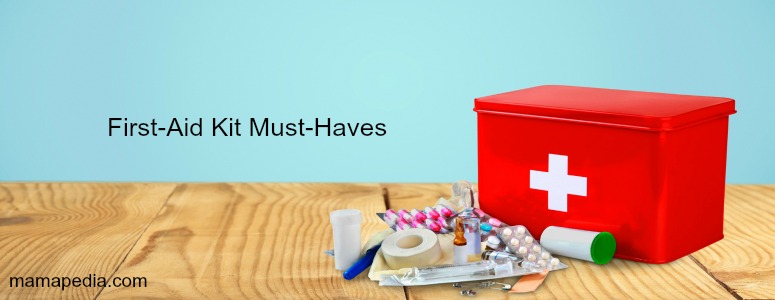
First-Aid Kit Must-Haves
You’ve seen them in corporate offices, the school nurse’s office and even in home kitchens. But what are the essentials you should pack in your First-Aid kits? Dr. Susan Gaeta, a Houston, Texas-based internist, notes that “A proper First-Aid kit isn’t just about Band-Aids and aspirin,” and adds, “include different items that might be useful the event of an emergency or a natural disaster.” Invest in a few heavy-duty zip-top tote bags or backpacks and keep one at home and one in each of your family vehicles.
1. Emergency contacts and phone numbers. Print out a list on cardstock and laminate it. On one side, include your pediatrician/doctor, hospital, poison control, police/fire departments and your emergency contacts. On the other side, list all the medications and their doses that you and your family take along with any allergies each family member has.
2. For wound care, assorted adhesive bandages, medical tape, cotton balls, swabs and gauze pads and rolls as well as non-latex gloves. Replace the gloves regularly because they can degrade over time.
3. Tweezers, scissors, a hot water bottle and ice packs. You can use traditional hot/ice packs, or chemically-activated ones, but keep in mind that you’ll still need a heating/freezing source no matter which types you pick.
4. Space blankets and a flashlight along with extra batteries. Check the batteries regularly to ensure they’re in good condition and haven’t leaked or exploded.
5. Packets of yellow mustard from the deli and bottled water in case you need to induce vomiting.
6. Anti-itch cream, aloe vera gel, petroleum jelly, Neosporin and rubbing alcohol. “You should consider making the kit specific to where you live or where it will be located especially as it relates to insect repellant and insect sting relief items,” Gaeta advises.
7. Thermometers, both oral and anal. Digital forehead thermometers are accurate and don’t contain mercury.
8. Children’s and adult OTC pain meds for fever and pain relief, along with water bottles to administer the meds. Change the water frequently, so chemicals in the plastic don’t seep into the water.
9. Children’s and adult Benadryl or similar for allergic reactions.
10. Any doctor-prescribed medications for your child and all other members of your family.
Gaeta adds that “It’s also useful to carry a calibrated dosage spoon or oral syringe as well as a rubber nasal aspirator bulb, which can double as a throat aspirator.” Keep all your First-Aid kit components in separate zip-top bags, because if something spills or degrades, it’ll be contained within the bag and not contaminate or ruin the remaining kit contents. Lastly, for your in-car kits, stash a few $10 bills and a few dollars in quarters in an extra pill bottle or container for emergency use. Your kit might not fit a tidy, small plastic box, but it’s worth the extra time and effort to outfit it with products crucial to keeping you and your kids as safe as possible at home and on the road.
Shelley Moench-Kelly, MBA, is a New England-based writer and editor whose freelance clients include Google, L’Oreal Paris and TheWeek.com.